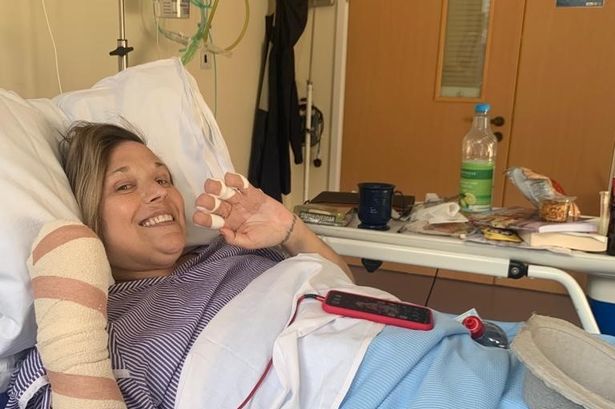Beth Bugden’s harrowing journey with sepsis began innocuously, mirroring the onset of a common seasonal illness. She experienced familiar symptoms like fatigue, muscle aches, and a general feeling of malaise. Dismissing these initially as a minor ailment, she carried on with her daily routine, unaware that a silent and deadly invader had already begun its insidious attack on her body. As the hours passed, her condition deteriorated rapidly. The seemingly harmless symptoms intensified, signaling the progression of an infection that was swiftly spiraling out of control. Unbeknownst to Beth, her immune system was engaged in a desperate battle against the overwhelming infection, triggering a cascade of inflammatory responses that ultimately led to sepsis, a life-threatening condition characterized by the body’s overwhelming and damaging response to infection.
The rapid deterioration of Beth’s health underscored the insidious nature of sepsis. Her initial symptoms, mimicking a common cold or flu, provided a deceptive façade, masking the gravity of the underlying infection. As the infection raged unchecked, her body’s immune response went into overdrive, leading to widespread inflammation and organ damage. This systemic inflammatory response syndrome (SIRS), a hallmark of sepsis, caused her organs to malfunction, ultimately leading to septic shock, a state of dangerously low blood pressure that deprived her vital organs of oxygen and nutrients. This cascade of events culminated in Beth losing consciousness, slipping into a coma, a stark testament to the speed and ferocity with which sepsis can take hold.
Beth’s descent into a coma marked the beginning of a grueling and protracted battle for survival. Connected to life-sustaining machines in the intensive care unit (ICU), she remained unconscious, her body ravaged by the ongoing infection and the subsequent organ dysfunction. The medical team worked tirelessly to stabilize her condition, administering antibiotics to combat the infection, providing respiratory support to maintain oxygenation, and employing various other interventions to support her failing organs. The days in the ICU blurred into weeks, and then months, as Beth remained tethered to the machines, her family and friends anxiously awaiting any sign of improvement, holding onto the hope of her recovery.
Emerging from the coma after an agonizingly long period, Beth faced a daunting road to recovery. She had to relearn basic functions like walking, talking, and eating, tasks that were once second nature now presented formidable challenges. The prolonged period of immobility and the effects of the infection had taken a significant toll on her physical strength and cognitive abilities. Therapy sessions became an integral part of her daily routine, involving painstaking exercises and repetitive drills to regain lost skills. The emotional and psychological impact of the ordeal was also profound, leaving her grappling with the trauma of her near-death experience and the arduous process of rebuilding her life.
Beth’s recovery journey, spanning more than a year, encompassed not only physical rehabilitation but also psychological healing. The trauma of her experience left deep emotional scars, requiring ongoing therapy and support to process the fear, anxiety, and post-traumatic stress. Her ordeal served as a stark reminder of the fragility of life and the devastating consequences of sepsis. The experience transformed her perspective, instilling a newfound appreciation for health and well-being, and igniting a passion to raise awareness about this often-misunderstood and life-threatening condition.
Driven by her own harrowing experience, Beth Bugden has become a staunch advocate for sepsis awareness. She shares her story publicly, emphasizing the importance of early recognition and prompt treatment of sepsis. Her message resonates with the urgency of her own near-death experience, urging individuals to seek immediate medical attention if they experience symptoms suggestive of sepsis. She highlights the deceptive nature of the initial symptoms, which can often mimic less serious illnesses, emphasizing the crucial role of early intervention in preventing the progression to severe sepsis and septic shock. Through her unwavering dedication, Beth aims to empower others with the knowledge and tools to identify and address sepsis, ultimately saving lives and preventing others from enduring the same agonizing ordeal she faced. Her story serves as a powerful testament to the resilience of the human spirit and the transformative power of adversity.














